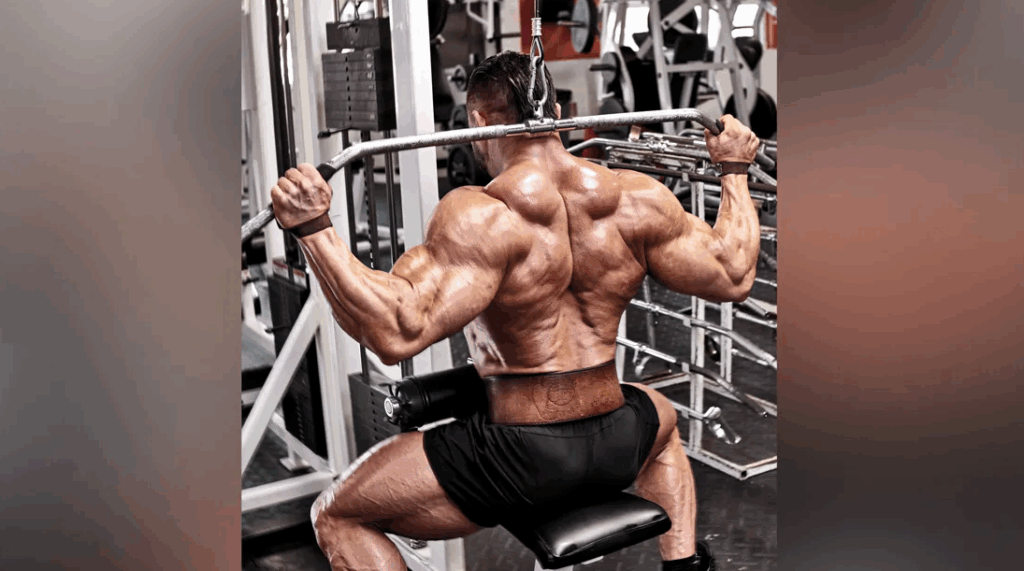Your neck and shoulders are vulnerable zones during lat training, yet many lifters unknowingly court injury with improper technique. You’ve probably felt that uncomfortable strain when a pulldown goes wrong. The neck pulldown might sound intimidating, but don’t let the name fool you. With the right positioning to protect your cervical spine, it can actually be one of the safest exercises for your back.
Master these often-overlooked form secrets, and you’ll change the game. What many see as a risky move can become a key part of your injury-prevention routine.
What Is the Neck Pulldown and Why Use It?
While often misunderstood, the neck pulldown is a variation of the traditional lat pulldown. In this exercise, the bar travels toward the upper chest or neck region rather than the sternum. Changing the bar path slightly increases lat engagement by targeting the top portion of these big back muscles.
Neck pulldowns aren’t like your typical pulldowns. They require you to keep your spine aligned from start to finish. When done right, they help strengthen your posture and keep your neck safe. This variation is especially helpful if you have tight shoulders or want to zero in on your upper back more effectively.
When done correctly, the neck pulldown is an excellent injury prevention exercise that teaches you to keep your head neutral under load. But if you already have neck issues, modify it or choose other exercises.

Proper Setup for Spinal Safety
Since proper spinal alignment is essential for any safe pulldown exercise, you should focus on protecting your cervical spine first. Begin by raising your seat so your arms can fully extend without hunching your shoulders or arching your back.
Position the knee pad to secure your lower body without forcing your spine into excessive extension. Keep a neutral head position throughout the movement. Ears should be perpendicular to your shoulders to avoid dangerous cervical strain.
Before initiating the pull, brace your core by drawing your navel slightly toward your spine. This form stabilizes your lower back and prevents compensatory movements.
Take a moment to check your shoulder mobility, too. If you can’t move through the full range without losing good form, try widening your grip or switching to a different variation until your flexibility gets better.

Form Cues to Prevent Injury
With your spinal alignment properly secured, mastering the execution phase becomes your next safety priority. Keep your elbows tracking in the same plane throughout the movement. Never let them flare excessively outward or collapse inward, or it will strain your shoulders.
Always pull the bar in front of your neck, not behind it. Pulling behind puts unnecessary stress on your cervical spine and raises your risk of injury. Before you start the pull, get your shoulder blades working by gently pulling them down and back. This approach sets up your lats to fire first, so your arms don’t end up doing all the work.
Maintain core bracing throughout the entire movement to protect your lower back and provide a stable foundation for force transfer. Think about pulling from your elbows rather than your hands, which naturally encourages proper biomechanics and reduces unnecessary stress on smaller muscle groups.
Advanced Techniques for Better Results
Once you’ve mastered proper form, incorporating advanced techniques can dramatically enhance your neck pulldown results while maintaining safety. Try tempo work and eccentric control by slowing down the upward phase to 3-4 seconds, maximizing time under tension for greater muscle activation.
Add isometric pauses at peak contraction, holding for 2-3 seconds when the bar reaches your collarbone. This approach stimulates the release of growth hormones and the mind-muscle connection needed for growth.
Try switching grips to target different back muscles. A wider grip targets the upper lats, while a closer, underhand grip targets the lower lats and biceps. Neutral grips may ease shoulder strain without sacrificing stimulation.
These advanced modifications keep your workouts fresh while building functional strength without compromising safety.
Common Mistakes That Lead to Neck and Shoulder Pain
Neck pulldowns frequently cause discomfort when performed incorrectly. The most damaging mistake is allowing forward head posture during the exercise, where your chin juts out as you pull, creating dangerous cervical compression.
Another common mistake is using excessive weight that forces you to rely on momentum rather than muscle control. This improper form not only diminishes results but greatly increases neck strain and injury risk.
Watch for shoulder elevation. Several lifters unconsciously shrug during pulldowns, transferring tension away from the lats to the trapezius. This error perturbs biomechanics and can cause impingement.
Move safely by keeping a neutral spine during the movement. If you have persistent discomfort, decrease the weight and work on technique first.

Integrating Neck Pulldowns into a Safe Program
Adding neck pulldowns to your training takes planning, not random execution. If you want the best results, try doing this lat pulldown variation once or twice a week. Pair it with other upper back moves like rows or face pulls to build balanced strength.
Start each session off with targeted warm-up drills that engage your rotator cuff and mid-back muscles. Try band pull-aparts and scapular wall slides before you lift any weight.
Adjust grip width to fit your shoulder anatomy. A medium grip is often the safest starting position before moving to wider or narrower hand positions.
Finally, prioritize eccentric control, where most injuries occur. Count to three as you return the weight, maintaining perfect position throughout the movement.
Frequently Asked Questions
How Many Neck Pulldowns Should Beginners Do per Workout?
Start with 2-3 sets of 8-10 reps of neck pulldowns per workout. You’ll build strength gradually without overtraining. Monitor your form carefully and don’t increase volume until you’ve mastered proper technique.
Can Neck Pulldowns Help With Existing Neck Pain or Tension?
No, experts do not recommend neck pulldowns for those with existing neck pain. They could worsen your condition. You’re better off seeking physical therapy and addressing the root cause of your tension first.
Are Neck Pulldowns Suitable for Teenagers or Older Adults?
Teenagers can safely perform neck pulldowns with supervision and proper form. For older adults, they’re beneficial but start with lighter weights and focus on technique. Both groups should monitor for discomfort and adjust accordingly.
Do Neck Pulldowns Require Special Equipment or Gym Attachments?
No, you don’t need special equipment for neck pulldowns. A standard lat pulldown machine with an adjustable seat and various attachments (straight bar, V-handle, or rope) will work perfectly for this exercise.
How Long Should I Rest Between Neck Pulldown Sets?
Rest 90-120 seconds between neck pulldown sets for ideal recovery. You’ll need this time to maintain proper form and adequate intensity. Beginners might need longer rests, while advanced lifters can reduce to 60 seconds.









